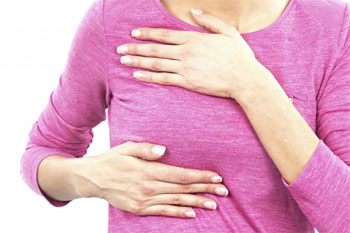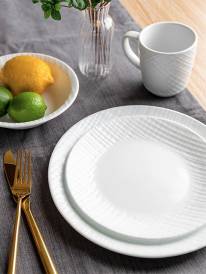Breast Health

Breast health: what's normal and what changes to look out for
Breasts come in all shapes and sizes. One may be larger than the other, a different shape to the other or you may have an inverted (pulled in) nipple or nipples.
Breasts can also change a great deal throughout life at different ages and life stages. Breasts can even change over the course of your menstrual cycle, feeling different on day 1 compared to day 14.
When it comes to breast health, the important thing to learn is what's normal for you. We spoke to Jean Hailes specialist Dr Sonia Davison to learn what breast changes are to be expected throughout life and when you should seek advice from a health professional.
Normal breast changes during life
From adolescence through to menopause, your breast tissue is influenced by hormones. When your hormone levels fluctuate – for example, due to your menstrual cycle, becoming pregnant or breastfeeding – this can cause your breasts to look or feel different.
"Many women find their breasts become tender and lumpy just before their period, and the pain or tenderness goes away when their period is over," says Dr Davison. "This pattern or cycle of change is very common and quite normal.
"It's also normal for breasts to feel lumpy generally. This is referred to as fibrocystic breast condition, where the lumps are non-cancerous and can occur in one or both breasts. Fibrocystic breast condition is very common and thought to affect more than 60% of women.
"However, any new lump or change in the breast needs to be properly assessed, so if you notice a change it is recommended that you see your doctor for further assessment."
Breastfeeding can bring very obvious changes to your breasts. Any issues such as mastitis (breast/nipple infection), cracked nipples or latching pain that are affecting your ability to feed, your health or the health or your baby should be discussed with your maternal health nurse or doctor.
In the perimenopausal years, when women transition from regular periods to their final period (menopause), women often experience increased breast tenderness or discomfort because of the changes in hormone levels, says Dr Davison.
"After menopause, breast tissue is largely replaced by fatty tissue," she says. "This change can alter the feel of your breasts and they often become softer, less dense and with less structure."
Get to know your breasts
Dr Davison urges all women to get to know their own breasts. "It's important to become familiar with the normal look and feel of your breasts," she says. "That way you will learn what is normal for you and if any changes outside of 'your normal' have occurred."
If you experience or notice any of these signs, see your doctor:
a new lump or lumpiness in your breast or armpit
thickening or swelling of part of your breast
irritation or dimpling of your breast skin
pulling in of your nipple or pain in your nipple area
unexpected nipple discharge
any change in the size or the shape of your breast
an unusual pain in any area of your breast (sourced from BCNA webpage)
Dr Davison reminds us that there is no right or wrong way to check your breasts for any changes. "Start just by getting used to it and getting into the habit of it," she says. "Look at your breasts and feel them regularly – about once a month is a good aim.
"Remember to check all parts of your breast, including your nipples, armpits and upper chest, being aware of any changes that are different for you.
"Having something slippery on your skin, like water or a body moisturiser, can help when you are feeling your breasts. Many women do this in the bath or shower or before getting dressed."
If you wish to follow a suggested guide on examining your breasts, Dr Davison recommends this step-by-step guide.
If you do notice a change, try not to panic. Most changes to your breasts are unlikely to be breast cancer or another serious disease, but be sure to discuss it with your doctor as soon as possible to rule it out.
Read more about breast health, including how to relieve breast tenderness or pain.
Published with the permission of Jean Hailes for Women's Health
jeanhailes.org.au
1800 JEAN HAILES (532 642)
MORE



